App News
How AI-Powered Apps Are Shaping the Future of Tech

In recent years, artificial intelligence (AI) has moved from being a futuristic concept to an integral part of our everyday lives. From personalized shopping recommendations to predictive text and smart home devices, AI-powered apps are increasingly embedded in how we interact with technology. The impact of AI on the app ecosystem is transformative, reshaping industries, creating new functionalities, and enhancing user experience in unprecedented ways. Here’s a closer look at how AI-powered apps are shaping the future of technology and influencing the way we work, shop, communicate, and more.
Revolutionizing Personalization
AI’s ability to analyze vast amounts of data and learn user preferences has taken personalization to a new level. Many apps now offer experiences tailored to individual users. For example, streaming platforms like Netflix and Spotify leverage AI algorithms to recommend movies, shows, and music based on past activity and preferences. Similarly, e-commerce apps like Amazon and Alibaba use AI to curate product recommendations, creating a more personalized and enjoyable shopping experience.
These personalized suggestions are not just about convenience; they are also about engagement and retention. AI-driven personalization keeps users coming back, as they feel the app “understands” their needs and desires. This level of personalization is only possible through machine learning algorithms that process data and refine their recommendations over time.
Enabling Voice Assistants and Natural Language Processing (NLP)
Voice-activated assistants such as Siri, Alexa, and Google Assistant rely heavily on AI and natural language processing to interact with users in a conversational way. NLP allows these assistants to interpret human language, understand intent, and respond with relevant information or perform tasks. This technology has unlocked a new level of accessibility and convenience, allowing users to complete tasks hands-free and access information quickly.
AI-powered NLP also improves over time as it learns from user interactions. This continuous learning makes voice assistants more efficient and accurate, allowing them to serve as valuable tools for everyday tasks. As NLP technology continues to advance, we can expect even more sophisticated voice assistants that understand context and nuance, making interactions feel even more natural.
Transforming Customer Service with Chatbots
Chatbots powered by AI have transformed customer service by providing fast and accurate responses to user inquiries. These virtual assistants are commonly found in customer service apps, helping users troubleshoot problems, track orders, and answer questions. AI chatbots are programmed to handle various queries, and they learn from interactions, becoming better at addressing customer needs over time.
In addition to answering questions, advanced AI chatbots can engage in complex conversations, resolve issues independently, and even predict when a customer may need assistance. This 24/7 availability significantly enhances the user experience, as customers can receive support without waiting for a human agent. This technology not only reduces operational costs for businesses but also improves response times, leading to higher customer satisfaction.
Enhancing Productivity in the Workplace
AI-powered productivity apps have become essential tools in the workplace, helping individuals and teams stay organized, manage projects, and streamline workflows. Apps like Microsoft 365 and Google Workspace have incorporated AI features that can automatically sort emails, suggest meeting times, and even draft responses. This automation saves valuable time, allowing users to focus on higher-value tasks.
Project management tools such as Asana and Trello also use AI to suggest task priorities, identify bottlenecks, and optimize team productivity. AI-driven insights can help managers make data-driven decisions, track team performance, and set realistic timelines. As AI continues to evolve, productivity tools are likely to become even more effective, making workplaces more efficient and adaptable.
Advancing Healthcare and Wellness
The healthcare industry has seen a surge in AI-powered apps aimed at improving patient care and wellness. From fitness tracking and mental health apps to diagnostic tools, AI is making healthcare more accessible and personalized. Apps like MyFitnessPal and Headspace use AI algorithms to recommend fitness routines, track progress, and provide mental health support.
In diagnostics, apps like Ada Health analyze symptoms and provide users with potential health insights. These apps collect data, apply machine learning, and provide suggestions that can help users make informed decisions about their health. While AI-powered healthcare apps are not substitutes for professional medical advice, they empower users to monitor their health, maintain wellness, and make proactive choices.
Boosting Security and Fraud Detection
AI’s capabilities in identifying patterns and anomalies make it invaluable for security. AI-powered security apps can detect unusual user behavior, protect against fraud, and safeguard sensitive information. For instance, financial apps use AI to monitor transactions for unusual patterns that might indicate fraud, alerting users or freezing accounts to prevent unauthorized activity.
Facial recognition and biometric security have also become common features in mobile apps, thanks to AI. These technologies provide enhanced security for users, adding an extra layer of protection for their data. In an era where data privacy is a major concern, AI-powered security features are helping build user trust in digital platforms by safeguarding sensitive information.
Paving the Way for Augmented Reality (AR) and Virtual Reality (VR)
AI plays a significant role in AR and VR applications, powering experiences that overlay digital information onto the real world or create immersive environments. Apps like Snapchat and Instagram have integrated AI-driven AR filters that analyze and modify user appearances in real-time. Beyond social media, e-commerce apps use AR to allow users to visualize products in their own space, such as placing virtual furniture in a room.
AI’s ability to interpret user gestures, track movements, and make adjustments in real-time is crucial for creating realistic and engaging AR/VR experiences. As AI technology advances, we can expect AR and VR to become even more interactive, with applications across gaming, education, and even remote work, enhancing how we learn, play, and collaborate.
Shaping the Future of AI-Powered Apps
The integration of AI in app development is setting a new standard in the tech industry, with many developers and companies embracing AI to create innovative applications that meet user needs. As AI becomes more sophisticated, we can expect to see an increase in the types of AI-powered apps available, with enhanced capabilities that provide personalized, secure, and engaging experiences.
AI-powered apps are not just transforming the tech industry but also impacting how we interact with the digital world. From revolutionizing personalization to enhancing security, productivity, and accessibility, AI is reshaping technology and setting the stage for a future where apps are not only functional but intuitive, adapting to the needs of users in real-time.
With continued advancements in AI, the future of app development promises a world of possibilities, making it an exciting time for developers, businesses, and users alike.
App News
YouTube Partners With Creative Artists Agency to Help Celebrities Combat AI-Generated Deepfakes

In a significant move to address the growing menace of AI-generated deepfakes, YouTube has announced a partnership with the Creative Artists Agency (CAA), one of the world’s leading talent and sports agencies. This collaboration aims to empower celebrities and public figures with tools and strategies to combat the misuse of their likeness in the digital realm. The announcement comes as deepfake technology continues to evolve, posing threats to personal privacy, reputations, and even public trust.
The Rising Threat of Deepfakes
Deepfake technology, powered by advancements in artificial intelligence and machine learning, has become increasingly sophisticated and accessible. By manipulating video and audio to create hyper-realistic but fake content, deepfakes can impersonate individuals with alarming precision. For celebrities and public figures, this has led to an uptick in fabricated videos and voiceovers that can damage their reputations, spread misinformation, or be weaponized for malicious purposes.
In 2024, the entertainment industry has been particularly vulnerable to this threat. Fake videos of actors endorsing products they’ve never used, fabricated scandals, and manipulated footage have made headlines, causing widespread concern. Beyond reputational harm, deepfakes also raise broader ethical and legal questions about consent and the responsible use of AI technologies.
The YouTube and CAA Partnership
Under this partnership, YouTube and CAA are focusing on three primary goals:
- Education and Awareness: The collaboration will launch educational campaigns to inform celebrities and the public about the risks of deepfakes and how to identify them. These campaigns will highlight real-world examples and teach critical thinking skills to assess the authenticity of digital content.
- Advanced Detection Tools: YouTube is developing and deploying AI-driven tools to detect and flag deepfake content uploaded to its platform. These tools aim to provide creators and celebrities with early warnings about potential misuse of their likeness, allowing them to take swift action.
- Legal and Policy Support: In partnership with CAA, YouTube will work on strengthening its policies and guidelines to address deepfake-related issues. The initiative will also provide resources to help affected individuals navigate legal challenges and protect their rights.
Neal Mohan, CEO of YouTube, emphasized the platform’s commitment to combating deepfake misuse. “As a global platform for content creators and audiences, we have a responsibility to ensure that the tools of AI are used ethically. Our partnership with CAA is a critical step in safeguarding the integrity of digital content and protecting public figures from the harmful effects of deepfakes.”
How Celebrities Are Affected
The impact of deepfakes on celebrities and public figures is multifaceted. For actors, musicians, and athletes, their likeness is often their most valuable asset. Deepfakes that misrepresent them can erode trust among fans and business partners. For instance, a manipulated video of an actor making inappropriate comments or endorsing controversial products can have lasting repercussions on their career.
CAA, representing a vast network of artists and influencers, has seen an increase in cases where its clients’ images and voices were exploited through deepfakes. Bryan Lourd, Co-Chairman of CAA, remarked, “Protecting the intellectual property and personal identity of our clients is paramount. This partnership with YouTube underscores our commitment to staying ahead of technological challenges and ensuring a safe digital environment for artists.”
The Role of Technology in Fighting Deepfakes
Ironically, the same AI technologies that enable deepfakes are also key to combating them. YouTube’s investment in detection tools relies on machine learning algorithms that analyze patterns in audio and video to identify signs of manipulation. These tools are being integrated into YouTube’s Content ID system, which already protects copyrighted material on the platform.
The collaboration also includes building a robust reporting system, enabling celebrities and their teams to flag suspected deepfake content easily. Once flagged, YouTube will prioritize review and take appropriate action, such as removal or demotion in search rankings.
Challenges and the Road Ahead
While the partnership between YouTube and CAA is a promising step, it’s not without challenges. Detecting deepfakes is a complex task, especially as the technology behind them becomes more advanced and harder to differentiate from genuine content. Moreover, the legal landscape surrounding deepfakes remains murky, with varying regulations across jurisdictions.
Critics also point out the potential for overreach. If detection tools and policies are not implemented transparently, they could inadvertently impact legitimate creators or stifle creative expression. YouTube has assured stakeholders that its approach will balance enforcement with respect for free speech and artistic freedom.
A Model for the Industry
The partnership between YouTube and CAA sets a precedent for how technology companies and the entertainment industry can collaborate to address shared challenges. By combining YouTube’s technological expertise with CAA’s industry insights, the initiative creates a comprehensive framework to tackle deepfake-related issues.
As the entertainment and tech industries continue to intersect, this collaboration may inspire similar partnerships, ensuring that innovation in AI is tempered with responsibility and accountability.
Conclusion
Deepfake technology is a double-edged sword, offering potential for creativity and innovation while posing significant risks to personal and public trust. The YouTube-CAA partnership is a proactive effort to address these risks, equipping celebrities with the tools and support they need to combat misuse effectively. As this collaboration unfolds, it marks a critical step toward fostering a digital ecosystem where technology empowers rather than exploits. Together, YouTube and CAA are leading the charge in protecting authenticity and trust in the age of AI.
App News
From AR to Automation: The Apps Shaping 2024
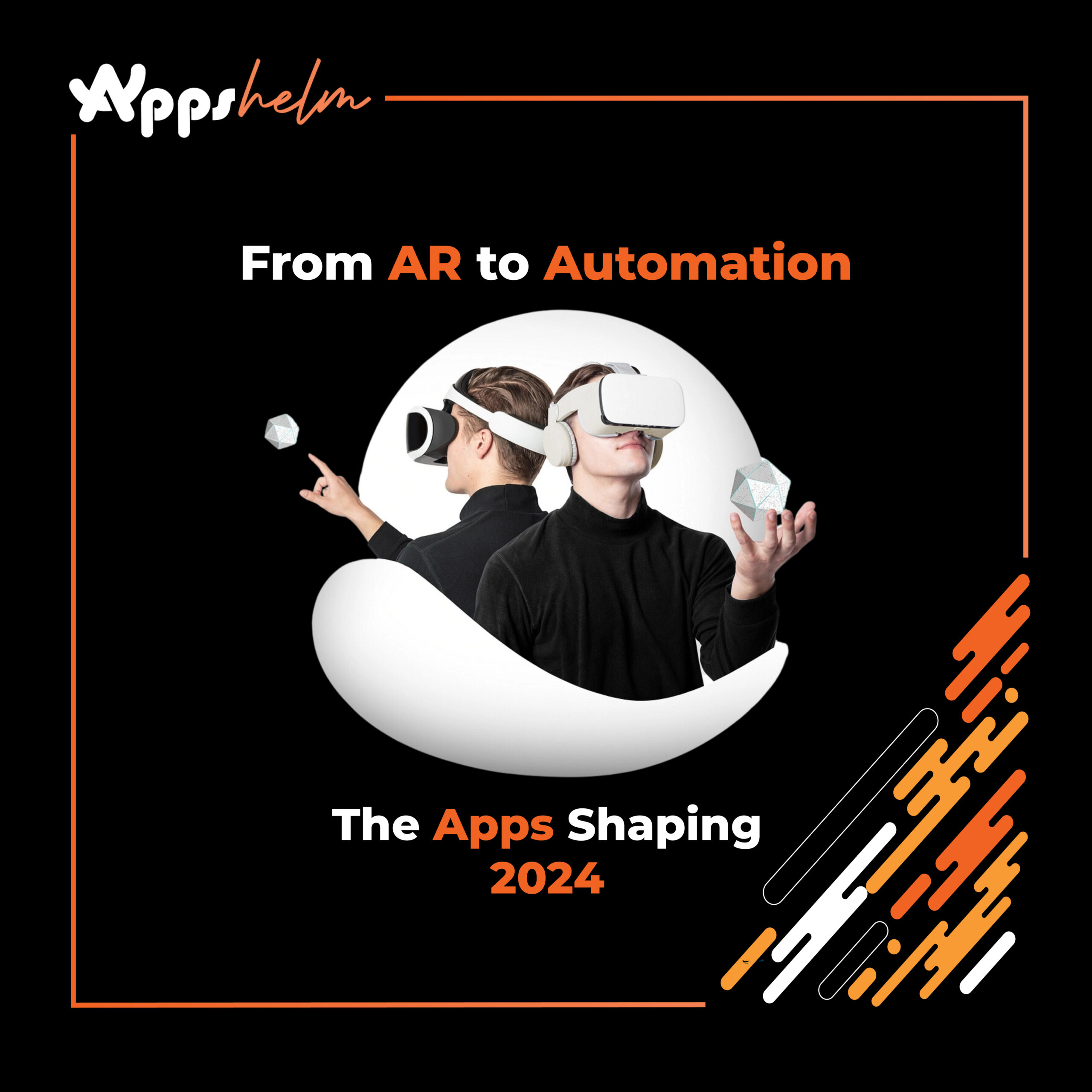
The year 2024 is a defining moment in the evolution of mobile applications. With technological advancements accelerating at an unprecedented pace, apps are becoming smarter, more interactive, and more integral to everyday life. From Augmented Reality (AR) redefining user engagement to automation streamlining workflows, the apps of 2024 reflect a landscape where innovation meets practicality. These transformative technologies are reshaping industries, enhancing user experiences, and driving new possibilities for businesses and consumers alike.
The Rise of AR in Everyday Applications
Augmented Reality (AR) has evolved far beyond its novelty phase, becoming a key feature in numerous applications. In 2024, AR is not just about entertainment; it’s embedded in various industries to offer immersive and practical experiences.
1. Retail and E-commerce
AR is reshaping the way people shop. Apps like IKEA Place and Sephora Virtual Artist allow users to visualize furniture in their living spaces or try on makeup virtually. This not only improves user confidence in purchasing decisions but also reduces return rates for businesses.
2. Education and Training
Educational apps are leveraging AR to make learning interactive and engaging. Apps like Google Lens enable students to explore topics visually by pointing their cameras at objects, while platforms like JigSpace use AR to bring complex concepts to life in 3D models.
3. Navigation and Exploration
AR-based navigation apps are transforming how people explore their surroundings. Applications like Google Maps now integrate AR to overlay directions in real-time, making navigation intuitive and accessible even in unfamiliar areas.
Automation: Simplifying Lives and Workflows
Automation has become a cornerstone of app development in 2024, streamlining everything from personal tasks to complex business operations. By combining machine learning and AI, apps are automating repetitive tasks, improving efficiency, and freeing up valuable time for users.
1. Personal Productivity
Apps like Todoist and Notion are integrating automation features that suggest task prioritization based on user habits. Virtual assistants such as Google Assistant and Siri are evolving to handle more complex tasks, like organizing schedules, sending emails, and even making reservations, without user intervention.
2. Business and Enterprise Solutions
Automation is transforming enterprise-level apps, especially in areas like project management and customer relationship management (CRM). Platforms like Slack and Salesforce integrate automation to streamline communication, manage workflows, and even predict customer needs using AI-driven insights.
3. Financial Management
Budgeting and finance apps like Mint and YNAB are leveraging automation to track expenses, categorize transactions, and offer actionable advice for users to achieve their financial goals. Automated investment apps like Robinhood and Acorns are making stock trading and saving effortless for everyday users.
The Convergence of AR and Automation
As AR and automation mature, their convergence is creating powerful, next-generation applications. For example, real estate apps are now using AR to provide virtual property tours, combined with automation to schedule visits, suggest properties based on user preferences, and even pre-fill application forms.
Healthcare is another sector benefiting from this convergence. AR is helping medical professionals visualize patient data during surgeries, while automation ensures seamless integration with electronic health records, reducing administrative burdens and improving accuracy.
Key App Trends Shaping 2024
1. AI-Powered Personalization
AI-driven apps are setting a new benchmark for personalization. By analyzing user behavior, preferences, and needs, these apps are delivering tailored recommendations, content, and solutions. Streaming platforms like Spotify and Netflix are prime examples, offering hyper-personalized playlists and viewing suggestions.
2. Cross-Platform Development
In 2024, apps are increasingly being designed to function seamlessly across multiple platforms. Frameworks like Flutter and React Native allow developers to create apps that perform consistently on Android, iOS, and even web browsers, enhancing user accessibility and experience.
3. Sustainability-Focused Apps
With environmental concerns taking center stage, apps promoting sustainable living are gaining popularity. Apps like JouleBug encourage eco-friendly habits, while carbon footprint trackers help users make informed decisions to reduce their impact on the environment.
4. The Role of 5G
The widespread adoption of 5G networks is enabling apps to perform faster and handle more data-intensive tasks. AR and VR apps, in particular, are leveraging 5G to deliver seamless, real-time experiences, reducing latency and improving performance.
Challenges and Opportunities
Despite their incredible potential, AR and automation apps face challenges. High development costs, hardware limitations, and privacy concerns can slow adoption. However, advancements in technology and increasing consumer demand are driving solutions to these hurdles.
For developers and businesses, this presents an opportunity to innovate and address user pain points. By focusing on user-centric design, data security, and affordability, they can create apps that not only attract users but also retain them.
The Future Outlook
Looking ahead, the role of AR and automation in mobile apps will only grow. The integration of AI, wearables, and IoT devices will further enhance the capabilities of apps, creating ecosystems that seamlessly connect various aspects of users’ lives. For instance, apps may soon automate everything from grocery shopping to home maintenance while offering AR-powered visualizations to guide decisions.
Additionally, industries like education, healthcare, and entertainment will continue to see groundbreaking innovations. Imagine virtual classrooms where AR and automation personalize lessons for each student or healthcare apps that provide real-time diagnostic assistance through a combination of AR and AI.
Conclusion
The apps shaping 2024 are not just tools; they are transformative experiences that redefine how we live, work, and interact with the world. By combining the immersive power of AR with the efficiency of automation, these apps are pushing the boundaries of possibility. As we embrace this new era of innovation, one thing is certain: the future of apps is as exciting as it is limitless.
App News
The Role of AR and VR in Transforming Mobile Apps

In the rapidly evolving world of mobile technology, Augmented Reality (AR) and Virtual Reality (VR) are two of the most transformative innovations. These technologies have revolutionized how users interact with mobile applications, creating immersive, engaging, and practical experiences that were previously unimaginable. From gaming and entertainment to education, healthcare, and retail, AR and VR are redefining the boundaries of what mobile apps can achieve.
Understanding AR and VR
To appreciate their transformative potential, it’s essential to understand the core differences between AR and VR. Augmented Reality overlays digital elements onto the real world through devices like smartphones, creating a blend of physical and virtual environments. For instance, AR apps can project furniture into your living room to help you visualize how it will look before purchasing. On the other hand, Virtual Reality immerses users in entirely virtual environments, isolating them from the real world. This is commonly experienced through headsets like Oculus Quest or HTC Vive but is increasingly accessible on mobile platforms through compact VR accessories.
Enhancing User Engagement
One of the primary benefits of integrating AR and VR into mobile apps is the unparalleled level of user engagement they offer. For example, AR-based games like Pokémon GO captivated millions worldwide by blending real-world exploration with virtual interactions. This fusion of physical and digital spaces turns passive users into active participants, encouraging deeper and longer interactions with apps.
Similarly, VR apps such as Within or YouTube VR transport users into immersive environments, enabling them to experience stories, places, or games like never before. This capability makes VR particularly effective in gaming, travel, and cinematic experiences, where the aim is to captivate users and offer a sense of presence.
Revolutionizing Industries
AR and VR are no longer confined to entertainment; their impact is evident across various industries:
1. Retail and E-commerce
AR is transforming how consumers shop online. Apps like IKEA Place allow users to visualize furniture in their homes before making a purchase. Similarly, beauty brands use AR to offer virtual try-ons, enabling customers to see how makeup products look on their faces without stepping into a store. These innovations not only enhance customer experience but also reduce product returns, saving companies significant costs.
2. Healthcare
In healthcare, AR and VR are being used for both training and patient care. VR-based apps simulate surgeries, helping medical students practice in a risk-free environment. AR apps, on the other hand, assist surgeons by overlaying critical information during procedures, improving accuracy and outcomes. For patients, VR apps like PainVR offer distraction-based therapies, reducing anxiety and pain during treatments.
3. Education and Training
Educational apps are leveraging AR and VR to make learning more interactive and effective. Platforms like Mondly VR allow users to practice languages in realistic virtual scenarios. Meanwhile, AR-based apps bring historical events to life or provide 3D visualizations of complex scientific concepts, making education accessible and engaging for all age groups.
4. Real Estate and Architecture
AR and VR have streamlined the real estate industry by enabling virtual property tours. Prospective buyers can explore homes without physically visiting them. AR apps allow architects and builders to overlay 3D models on construction sites, visualizing the final structure in real-time and identifying potential design issues before implementation.
Overcoming Challenges
While AR and VR are transforming mobile apps, their adoption is not without challenges.
Hardware Limitations
AR and VR experiences often require powerful hardware, which can be a barrier for mobile users with budget devices. However, advancements in mobile chipsets and 5G connectivity are gradually reducing these limitations.
Development Costs
Creating AR and VR applications is resource-intensive, requiring specialized skills and tools. However, platforms like ARKit (Apple) and ARCore (Google) are making it easier for developers to integrate these technologies into their apps.
User Adaptation
Despite their benefits, AR and VR apps may face resistance from users unfamiliar with the technology. Educating users and offering intuitive app designs are critical to overcoming this hurdle.
The Future of AR and VR in Mobile Apps
The future of AR and VR in mobile apps is incredibly promising. With the advent of AI, these technologies are becoming smarter and more responsive. For instance, AR apps are evolving to recognize and interact with more complex environments, while VR is enabling social interactions in virtual spaces, such as virtual conferences or meetups.
Additionally, the integration of AR and VR with wearable devices like AR glasses and VR headsets will further enhance their usability and accessibility. As these devices become mainstream, mobile apps will serve as the primary interface for users to interact with mixed reality environments.
Conclusion
AR and VR are no longer futuristic concepts; they are here, transforming the mobile app landscape. By enhancing user engagement, revolutionizing industries, and pushing the boundaries of innovation, these technologies are shaping a future where mobile apps become immersive, interactive, and indispensable. As AR and VR continue to advance, the potential for creating transformative user experiences in mobile apps is boundless. Businesses and developers that embrace this evolution will undoubtedly lead the way in the next wave of mobile technology innovation.
-

 App Tips5 months ago
App Tips5 months agoBest Alternative Keyboard Apps
-

 App News5 months ago
App News5 months agoGoogle Confirms Play Store Update
-
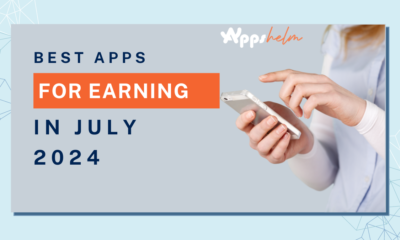
 Recommendation5 months ago
Recommendation5 months agoBest Apps for Earning in July 2024
-
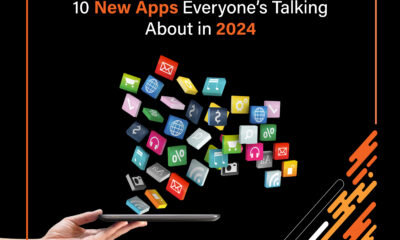
 App Reviews2 months ago
App Reviews2 months ago10 New Apps Everyone’s Talking About in 2024
-
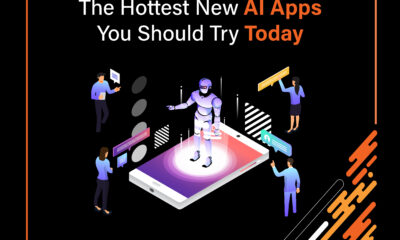
 Uncategorized2 months ago
Uncategorized2 months agoThe Hottest New AI Apps You Should Try Today
-

 Entertainment5 months ago
Entertainment5 months agoBest Android Game App of July 2024
-
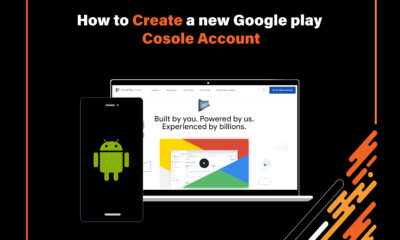
 How To3 months ago
How To3 months agoHow to create a new Google Play console account
-

 App Reviews5 months ago
App Reviews5 months agoThese VPN Apps Can Help Improve Your Online Privacy




